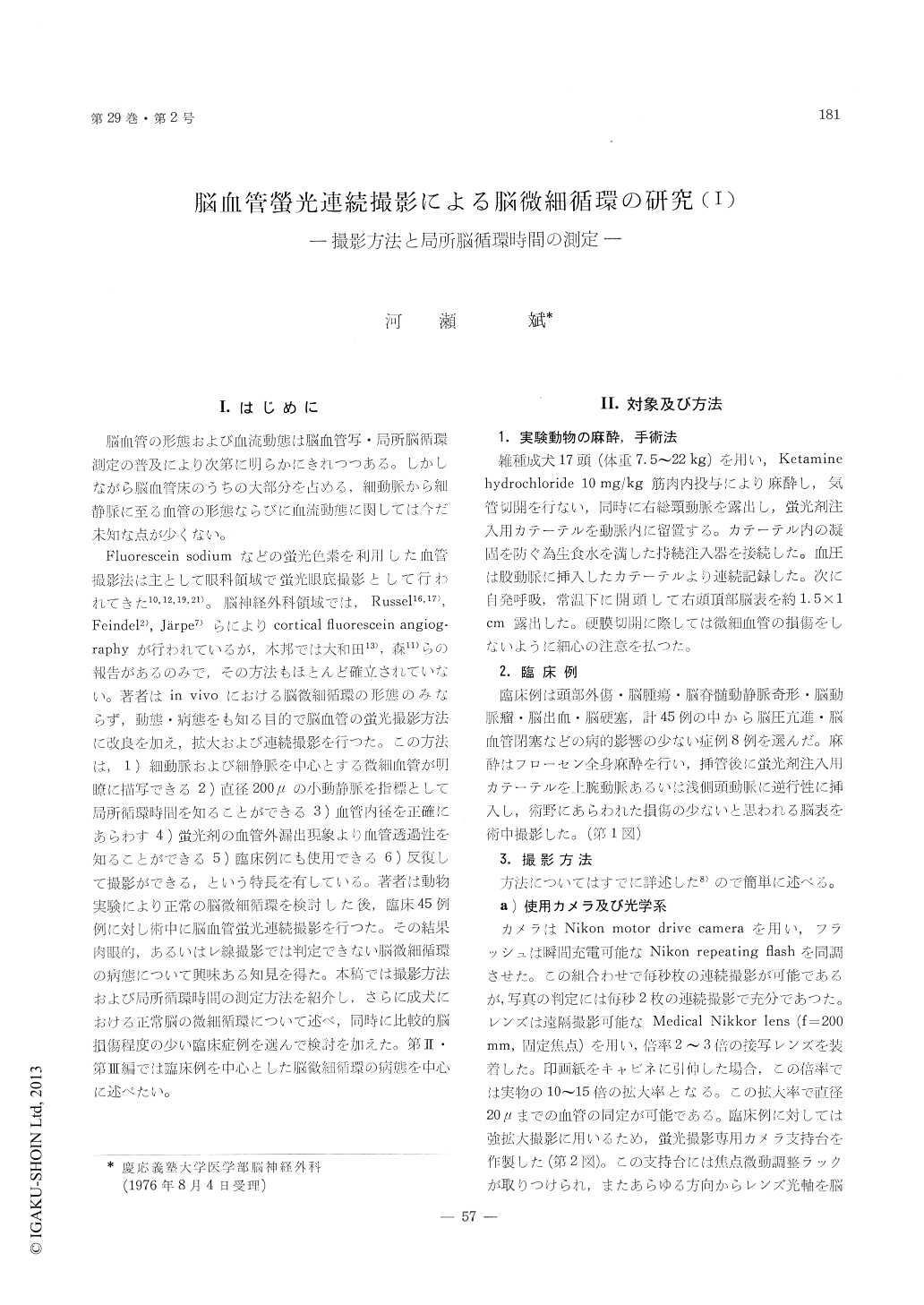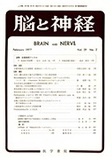Japanese
English
- 有料閲覧
- Abstract 文献概要
- 1ページ目 Look Inside
I.はじめに
脳血管の形態および血流動態は脳血管写・局所脳循環測定の普及により次第に明らかにきれつつある。しかしながら脳血管床のうちの大部分を占める,細動脈から細静脈に至る血管の形態ならびに血流動態に関しては今だ未知な点が少くない。
Fluorescein sodiumなどの蛍光色素を利用した血管撮影法は主として眼科領域で蛍光眼底撮影として行われてきた10,12,19,21)。脳神経外科領域では,Russel16,17),Feindel2),Järpe7)らによりcortical fiuorescein angiog—raphyが行われているが,本邦では大和田13),森11)らの報告があるのみで,その方法もほとんど確立されていない。著者はin vivoにおける脳微細循環の形態のみならず,動態・病態をも知る目的で脳血管の蛍光撮影方法に改良を加え,拡大および連続撮影を行つた。この方法は,1)細動脈および細静脈を中心とする微細血管が明瞭に描写できる2)直径200μの小動静脈を指標として局所循環時間を知ることができる3)血管内径を正確にあらわす4)蛍光剤の血管外漏出現象より血管透過性を知ることができる5)臨床例にも使用できる6)反復して撮影ができる,という特長を有している。著者は動物実験により正常の脳微細循環を検討した後,臨床45例例に対し術中に脳血管蛍光連続撮影を行つた。その結果肉眼的,あるいはレ線撮影では判定できない脳微細循環の病態について興味ある知見を得た。本稿では撮影方法および局所循環時間の測定方法を紹介し,さらに成犬における正常脳の微細循環について述べ,同時に比較的脳損傷程度の少い臨床症例を選んで検討を加えた。第Ⅱ・第Ⅲ編では臨床例を中心とした脳微細循環の病態を中心に述べたい。
Cerebral microcirculation is obviously of great importance in neurological diseases. Serial fluores-cein cortical angiography is an excellent method to gain some information regarding cerebral micro-circulation and hemodynamics, both in experimental and clinical studies. In this report, the method for photographing and measurement of regional circu-lation time are mentioned, and normal hemody-namics were examined in 17 adult dogs. Further-more, cortical vessels in 8 clinical cases were photographed during surgery. In experimental study, 0.5% sodium fluorescein was injected through a fine teflon catheter placed in a common carotid artery. In clinical cases, 0.5% sodium fluorescein was injected through a catheter placed retrograde in the brachial artery or superficial temporal artery after the exposure of cerebral hemisphere.
Simultaneously with the beginning of injection of fluorescein solution, serial photographs were taken 2 or 3 times per second by using a motor driven camera with Medical Nikkor lens. Addi-tional apparatus were KW No. 12 filter and strobo-scopic light covered with interference filter. In the photographs, vessels of 20μin diameter could be clearly recognized.
Local circulation time was measured with arteries and veins of 200μin diameter as the indicator. The following variables of blood flow were recorded in each case, as defined by Margolis.
Regional Circulation Time (RCT)
Arterial Exposure Period (AEP)
Venous Exposure Period (VEP)
Arterio-Venous Exposure Ratio
(AVER=AEP/VEP)
In experimental studies, RCTs were ranged 2.0 ±0.65 seconds, average of AEP 1.9 seconds, of VEP 6.1 seconds and AVERs were ranged 0.32±0.11. In clinical cases, RCTs were ranged 2.0±0.48 seconds. No difference in RCT was found between experimental and clinical studies. AVERs were ranged 0.44±0.15 in clinical cases. This value was slightly larger compared with experimental data. The increase of AVER in clinical cases resulted from the shortening of VEP (3.9 seconds). No laminar flow was observed in cortical small vein of 200μin diameter. The smaller veins were favor-able indicators for measurement of local circulation time in epicerebral circulation.

Copyright © 1977, Igaku-Shoin Ltd. All rights reserved.


